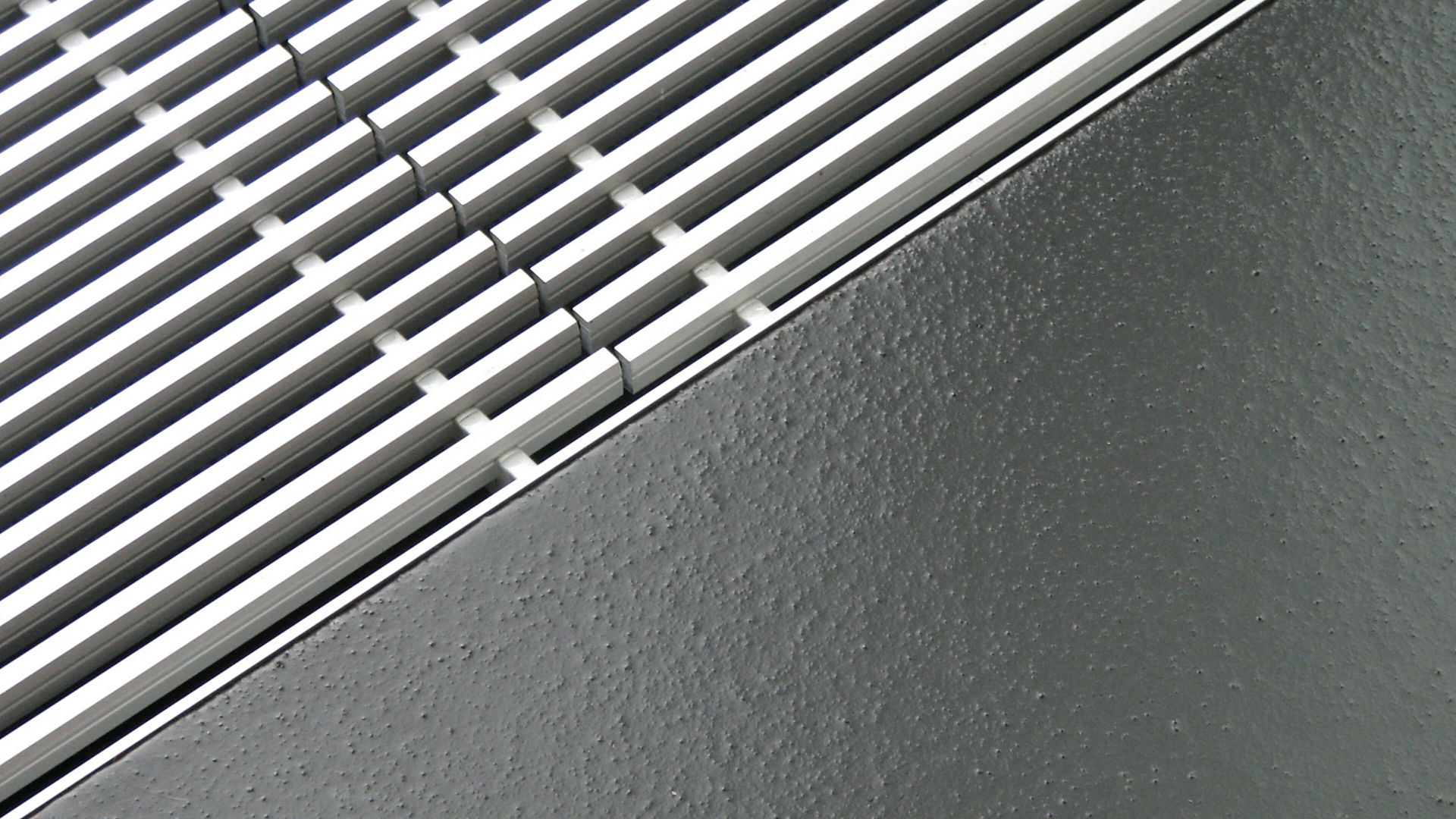THE IMPORTANCE OF DRAINAGE
In animal care facilities water is an ever present element and thoughtful examination of how to protect these areas must be part of the overall design concept. Hence, there are three core areas to take into the design consideration:
- Drainage
- Flooring
- Cleaning
It’s imperative that the drainage, flooring and cleaning regimes be compatible. Drainage design must connect properly with the surrounding flooring. A sealant appropriate to the application must be applied. Such an integrated approach helps minimize the risk of cracks forming where flooring and drainage connect and removes the associated risk of bacterial harborage.
More broadly, the flooring needs to be fit-for-purpose with respect to slip resistance, durability and load-bearing capabilities, and both flooring and drainage have to work in a practical manner with the cleaning protocol for a facility.
Failure to consider the compatibility as well as the suitability of flooring and drainage designs can result in long term durability issues, among them higher than anticipated cleaning costs, bacterial contamination and the ineffective collection of water and other liquids which in turn present a risk to hygiene, health and safety.
KEY CRITERIAS
Preliminarily, key areas of inquiry include the type of drainage – line or point – that is most appropriate; the kind of falls required in the floor; the suitability of the system layout relative to the equipment you plan to use; the hydraulic capacity required; and the grating system required to correspond to load. Once these issues are determined, a number of more granular specification criteria must be considered.
1. CHOOSING THE RIGHT STEEL
Where hygiene is concerned, stainless steel with a roughness factor of 0.3 to 0.8 micrometers should be used. Designers need to consider operating conditions and fully understand the cleaning methodology and chemicals that will used during the cleaning process before deciding which grade of steel to use.
2. WELDING PROCESS
The manufacturing process with regard to welds and welding should follow the best practice recommendations that advises “welds must be continuous, round, smooth, ground and/or polished”; overlapping joints must not be used nor should welds be made in the corners.
3. PRODUCT DESIGN CONSIDERATIONS
Design decisions affect both functionality and cleaning. At the most basic level, ask yourself these questions:
- Is your design fully drainable?
- Does your drainage have rounded corners with minimum radii of 3 mm?
- Can your drainage be cleaned without power-washing?
If your drainage isn’t fully drainable, its hygienic performance will be compromised. Drainage channels must have completely drainable dry sumps with engineered positive drainage features to prevent the build-up of stagnant water, odors, microbial growth and potential chemical hazards.
Sharp corners are harder to clean, particularly if they’re situated at a right angle or bend, creating the very real risk that the corner won’t get cleaned effectively. To meet best practice guidelines, drainage should have rounded component features and corners with minimum radii of 3mm.
Also, a word about power washing: Don’t! Power-washing drainage creates a high velocity spray that spreads the bacteria living in the drainage around the facility. It is, in short, one of the worst things you can do. Drainage should be designed in a way that ensures power washing is not required.
4. INTEGRATION OF DRAINS INTO THE FLOOR
As previously stated, the quality of the drainage/floor connection is as important as drainage and flooring quality. Improper drainage/floor connections can compromise hygiene and lead to downtime and associated costs.
Best practice advice states that drainage channels and gullies must be designed with usage of U-shaped visible edge profile of not less than 1.5 mm thickness. Any edge profile should be filled by the drainage supplier with a waterproof material which can resist the vertical and horizontal stresses placed upon it and so eliminate areas for bacterial growth.
5. OPERATIONAL CONSIDERATIONS
As with any facilities project, the key to getting the right answers is asking the right questions. With regard to cost, ask yourself about the drainage system’s cost-efficiency. Is it easy to clean, reducing labor costs and downtime? Is it durable, requiring a minimum amount of maintenance? Just how easy will it be to work with day-to-day?
Taking the longer view, is your choice future-proofed? Trends change continuously, but the construction and refurbishment of facilities is a long-term investment – and areas such as floors and drainage are expensive and disruptive to change. By considering long-term requirements at the beginning rather than the end of the design process, you can easily sidestep additional capital expenditures and inconvenience down the road.

